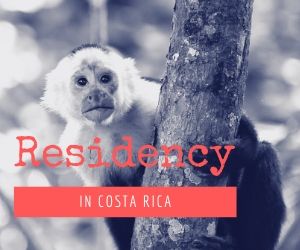wiki wrote:
It is also noteworthy that many of the sex workers in Costa Rica come from Desamparados. They frequent places like the Hotel Del Rey and Key Largo. Others, who may be more entreprenuerial, work at the Horseshoe casino, J Elite, or Tango India.
Luck4unme wrote:
As I understand Wikipedia, users are allowed to add and post comments and descriptions.
As to the accuracy of the noted reference to a large number of girls working in the sex industry, I agree. I have more than a few friends that I pick up in front of Pali in Desemparados.
BangBang57 wrote:
...yes, it does seem that a disporportionly large number of the 'working chica' either come from or live in Desamparados
And the area with probably the second largest # would probably be Hatillo with Barrio 15 de setiembre de Hatillo probably having by far the largest # of working chicas of any Barrio.
Went with my ex girlfriend to her son's kindergarden graduation in 15 de setiembre last year. Out of 52 mothers, I recognized 22 as working chicas and my ex pointed out 3 or 4 others that "had retired". Also according to her and from what I saw, it seems the average chica living in 15 de setiembre starts 'working' at about 14 years of age.
One has to be very careful here. The differences might seem subtle but, from a purely logical and analytical standpoint, saying that a large number of a certain work group come from a certain area is not the same thing as saying a large number living in that certain area also work in that certain group, which is what this article at least
seems to imply (or what many of its readers may incorrectly infer

).
I'll give a different example to illustrate. Is saying that a large number of cab drivers in the US come from India the same thing as saying a large number of Indians in the US are cab drivers? I suppose the latter inference might be true but, if so, would be purely by coincidence rather than any logical deduction. It could just be that the number of ALL cab drivers is such a relatively small portion of the total US population or even just of the total Indian population in the US. In that case, even if ALL cabbies were Indians, there would still only be a relatively small percentage of all Indians that were cabbies. (Didya get that?

No? Too bad. I'm not going to try restating THAT again

)
Getting back to the case of working girls in CR, IF a large number of the women in Desamparados are prostitutes, from a logical standpoint couldn't that just as easily be a result of a) a disproportionate number of chicas from poorer backgrounds in CR turning to the sex trade to earn their living
in general and b) any chica working the sex trade in the SJ area is more likely to come from or live in one of the nearby poorer neighborhoods rather than say come from some well to do family in Ezcazu? And, if that is what is going on here, then wouldn't one expect similarly poor barrios to have similar "disproportionate" number of sex workers. BangBang's comments actually tend to support that conclusion and even speculates that the number of working girls in 15 de Setiembre is even higher than it is in Desamparados. I'd ask that, if that is true, then how
noteworthy is the observation about Desamparados in wiki?
We, as a group, obviously have a lot of contacts with "working girls" and in our conversations with them we discover many in fact come from or live in those neighborhoods (apparently some of us even go there to pick them up), but how many of us go out and actually poll those neighborhoods to discover how many of those neighborhoods earn their living by other means. The problem here is that this sort of comment does seem to suggest that most or certainly a large number of Desamparados residents are prostitutes AND that (again assuming that observation is true) that it is somehow more true of Desamparados than it is of other neighborhoods. The observation that many poor chicas in the SJ area work in the sex trade and live in poor neighborhoods might be appropriate in an article and how large the sex trade is in CR
in general, but IMHO is not in an extremely short article on a particular poor barrio that finds little else to say about that barrio other than providing its size and population.
BTW, I also find the comment about chicas working at the Horseshoe, Elite or Tango India somehow being more "entreprenuerial" than the independent working girls that work at say the HDR or KL.

What does that even mean and how can the author say that? Also, on his 2 person list of notable people from Desamparados he lists "Maribelle (Manager of the Horseshoe Casino in San Jose)". She's notable? The author doesn't seem to even know her last name. And unlike the facts about population, size and history, the author failed to include any citations to support his observations about sex workers. I strongly suspect that this article was written by some Gringo denizen of the Gulch rather than by ICT, Mayor johnny Arayas or even an actual resident of Desamparados.
READER'S DIGEST VERSION FOR THOSE NOT WANTING TO READ MY LONG POSTS: I guess what I'm trying to say in nut shell is that, to the extent this observation is true, it is more noteworthy as a reflection on CR, or at least SJ and its immediate environs, than it is on little Desamparados, which is just one of several poor barrios for which the same observation could just as easily be made.









